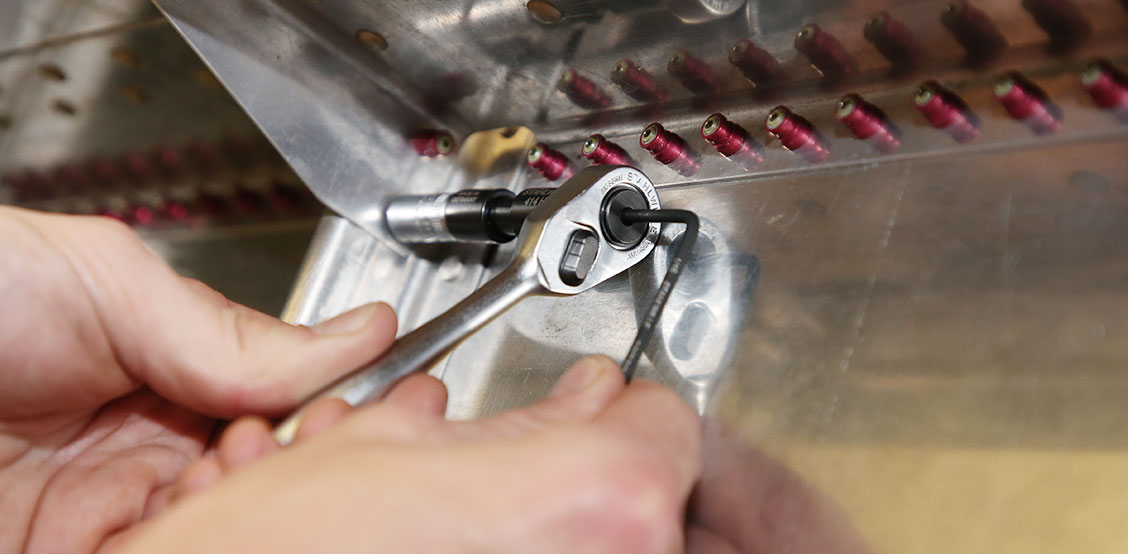23.12.2022
What are HI-LOK connections? And what are their advantages?

Inhalt
Special applications require special connections. In the aerospace industry, for example, HI-LOK countersunk rivets are very popular. Below we will explain what lies behind the name as well as the advantages of HI-LOK connections.
HI-LOK™ is a registered trademark of Hi-Shear Corporation, a provider of aerospace solutions. They are usually used in the manufacture of structural assemblies.
01.
How does HI-LOK work?
A typical HI-LOK connection consists of a bolt and a sleeve with threads and counter-threads. The bolt is guided through a hole in the workpiece and can be fixed from the opposite side using the cuff. A hexagonal ratchet ("Allen") inserted into the bolt from above through the tool holder of the ratchet fixes it in place while the collar is tightened. What makes it special: The cuff is fitted with a detachable nut. As soon as the correct tightening torque or pretension is reached, it separates from the sleeve without any user intervention. The cuff is then optimally tightened.
02.
What are the advantages of HI-LOK?
HI-LOK connections are usually used when high tensile strength is needed in extreme applications. For example, in aerospace, where safety is a top priority. The advantages:
- A secure connection with the ideal pretension can be created without the need for complex tools.
- The HI-LOK system saves space and is therefore suitable even for narrow construction spaces.
- Compared to other fastening methods, HI-LOK is characterised by high fatigue resistance combined with high strength.
- Weight reduction can be achieved with HI-LOK compared to conventional screws and nuts.
03.
Do you need a special HI-LOK tool?
Short answer: Yes. In order for the Allen key to be inserted into the bolt from above, the head of the ratchet - i.e. the tool holder - must have a centrally positioned "channel". Put simply, HI-LOK ratchets have a hole in the tool holder.
The problem: Since there is usually a ball or pin in the centre of the tool holder that locks slip-on tools, nuts and other tool attachments can no longer be fixed in place. In aviation, however, effective protection against foreign object damage (FOD) is particularly important and the accidental loss of small parts must be avoided at all costs.
For this reason, STAHLWILLE has developed and patented a special HI-LOK ratchet. In this case, the hexagonal or Allen key merely pushes the ball lock to the side.
